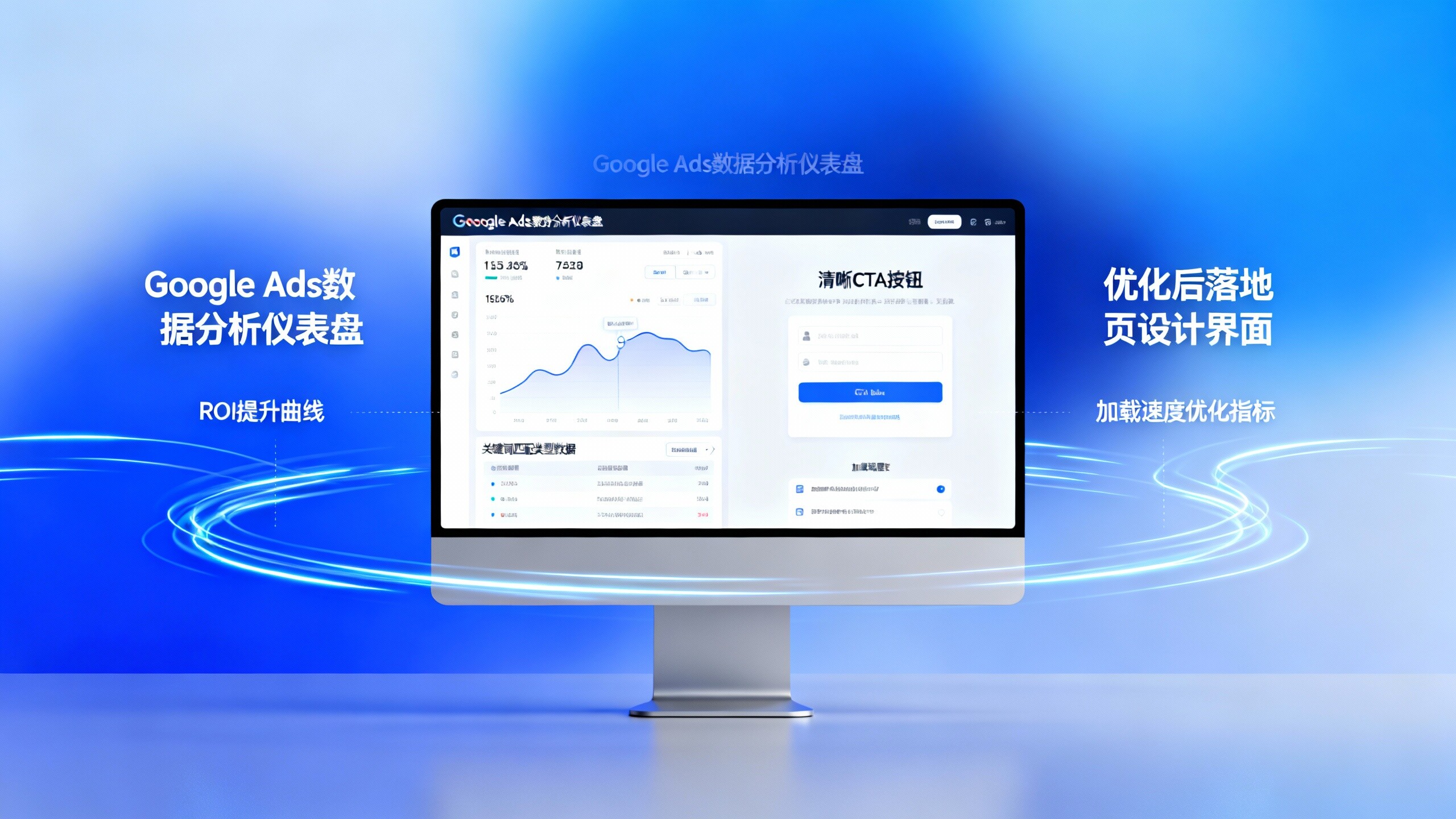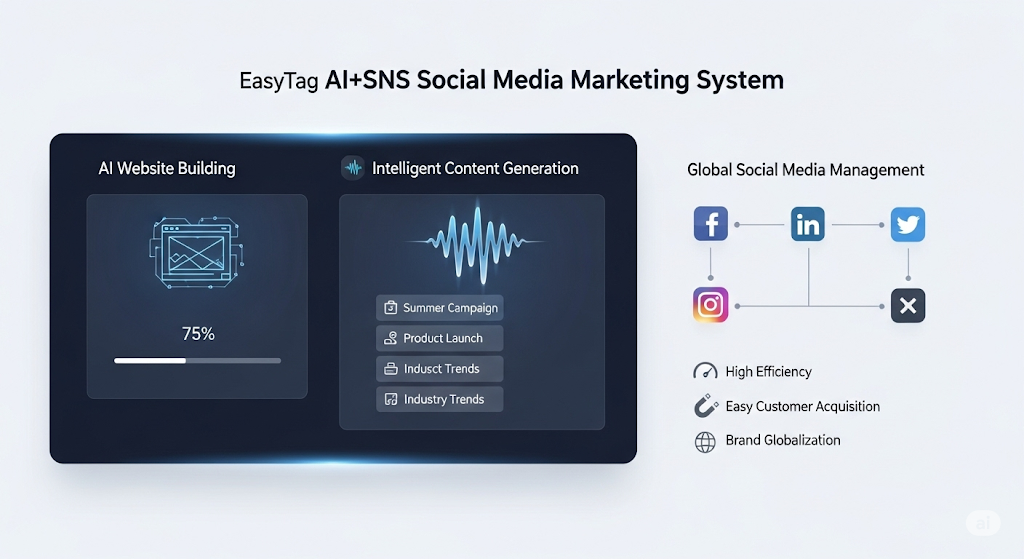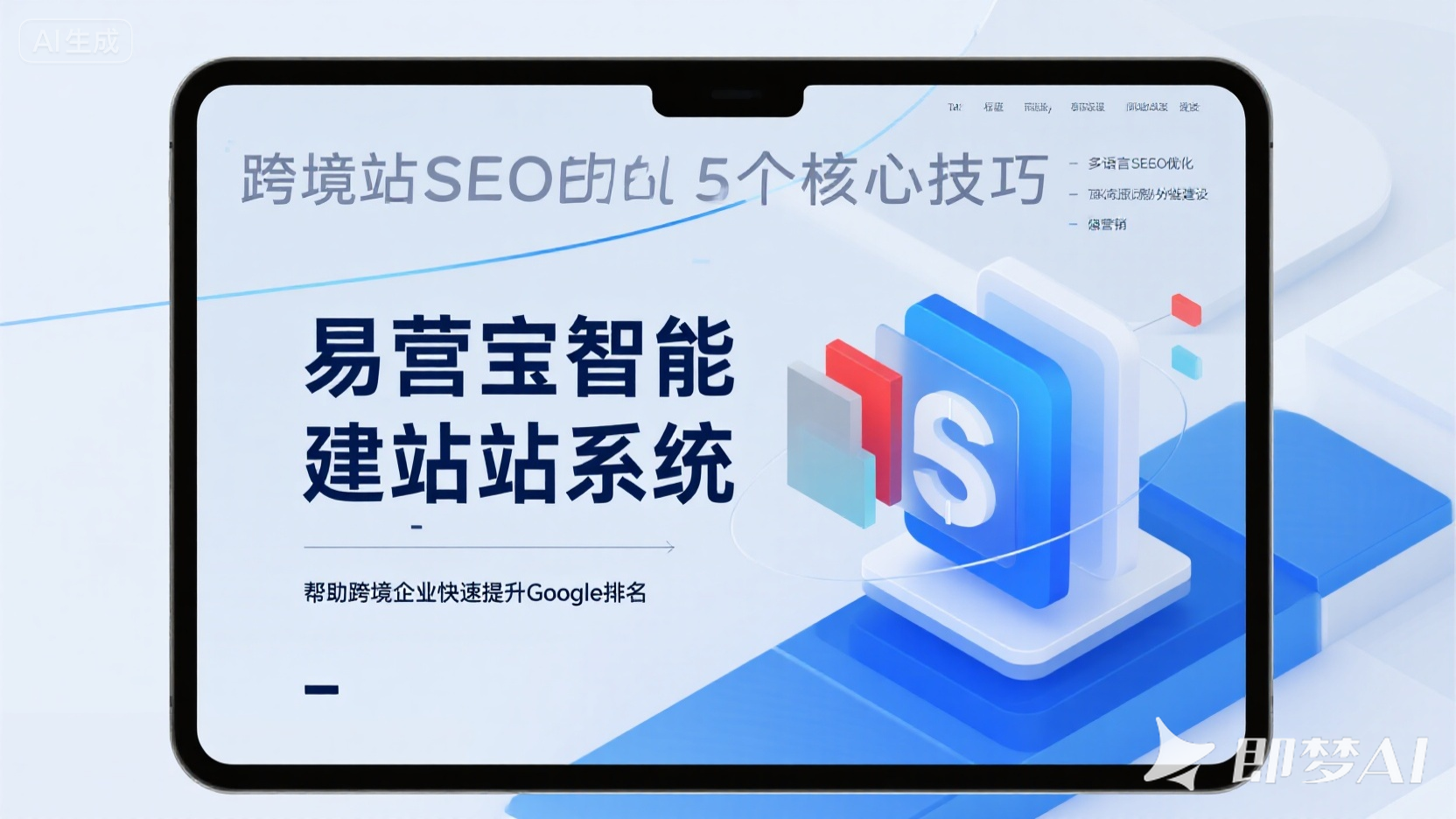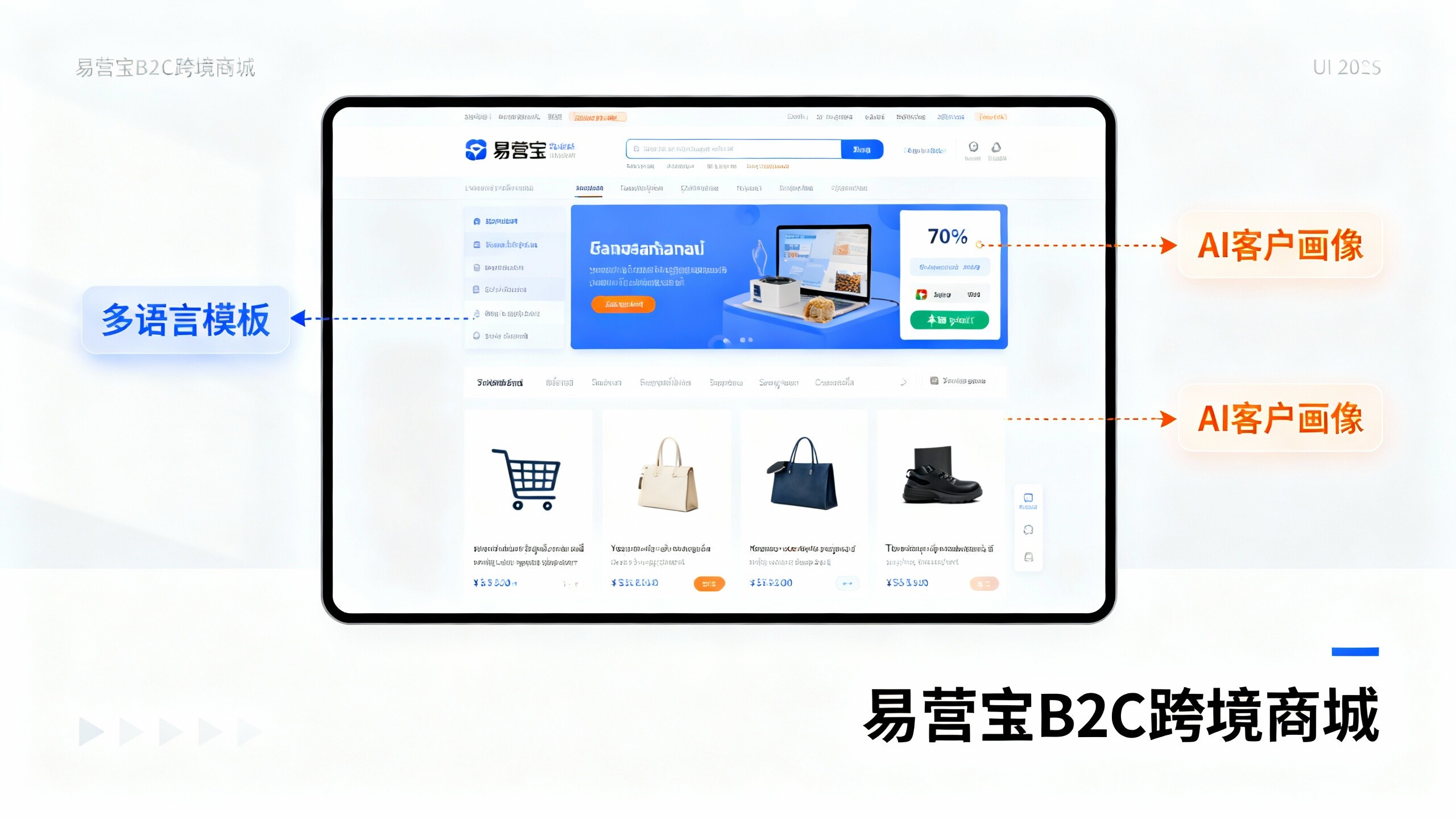Easy Camp Cloud Intelligent Website Construction and Marketing System Platform!
- AI Multilingual Website System Test: Build 8-Language Sites in 1 Hour?2025-11-25View Details
- Evaluation of Foreign Trade Independent Station SaaS Platform: Why Did Eyingbao Become the Dark Horse in the Industry?2025-11-24View Details
- Enterprise-grade self-service website building system selection guide: Is Eyingbao suitable for your business?2025-11-22View Details
- Eyingbao User Experience Open Review: 3-Month Real-World Test Report Reveals If It's Worth Investing In2025-11-25View Details
- Smart Website Market Report Quick Read: Three Major Trend Predictions and Vendor Response Strategies2025-11-22View Details
- China Smart Website Construction Market Research: Industry Scale, Growth Points, and Potential Customer Profiles2025-11-22View Details
- G2 Yiyingbao: Score Details and Practical Suggestions on How to Improve Platform Ratings2025-11-22View Details
- How is Yiyingbao? Real user feedback and 3 major use case scenarios2025-11-25View Details
Common pitfalls in independent website operations: 5 traps that cause your traffic to drain away
Common pitfalls in independent website operations often lead to traffic loss. This article combines multilingual website systems and data analytics tools to analyze five major pitfalls and provides actionable solutions.
This article targets market researchers and independent website operators/managers, focusing on the pain points of independent website operations in B2B scenarios: from website building to lead generation and conversion, which common strategies can cause traffic to be wasted? The article integrates the practical applications of multilingual website systems, multilingual foreign trade website systems, and data analytics tools to offer implementable repair paths and prioritized recommendations, enabling businesses to quickly recover and amplify traffic value in a global website SaaS platform environment.

1. Neglecting Localization and Multilingual Strategies: Inability to Reach Target Markets
Many businesses only offer an English or single-language version when building an independent website, assuming a simple translation will suffice. However, this mistake directly impacts search engine visibility and conversion rates. Effective localization goes beyond language switching; it includes localizing keywords, proper URL and hreflang settings, local payment and shipping information, localized forms, and legal compliance prompts. For example, users in European markets prefer local language search terms and clear logistics descriptions, while in Russian or Arabic markets, page layouts, images, and color preferences also affect trust.
Technically, choosing a multilingual website system or multilingual foreign trade website system is key. An ideal system should support automatic/manual language switching, TDK (title, description, keywords) management by language, and CDN acceleration with language routing to ensure fast loading and SEO performance in target countries. Additionally, combining data analytics tools for local search behavior analysis can identify high-value long-tail keywords for each market, avoiding budget waste on non-localized generic terms and improving the quality of intent-driven traffic.
2. Ignoring Site Performance and Technical SEO: Search Engines Fail to Index or Penalize
Site performance and basic technical SEO issues are common and fatal causes of traffic loss for independent websites. Slow page loading, mobile-unfriendliness, incorrect robots configurations, missing structured data, duplicate content, and wrong canonical tags can all limit search engine crawling or lead to ranking drops. Especially in cross-border scenarios, server nodes and CDN strategies directly impact First Contentful Paint (FCP) and page experience scores.
Solutions include: prioritizing website health checks, using log analysis to assess crawl frequency and errors; setting up proper caching and lazy loading for images; correctly using hreflang and canonical tags on multilingual pages to prevent language competition; and adding structured data to key pages to enhance search result richness. For B2B websites, ensure forms and download resources are quickly accessible to reduce potential customer drop-off points. In practice, combining a website platform with global CDN nodes and automatic SSL can quickly fix most performance issues at the technical level, recovering traffic lost due to speed and indexability problems.
3. Unbalanced Content Strategy: Lack of Semantic Coverage and Sustainable Output Mechanisms

Many independent website operators mistakenly believe that publishing a few product pages and a couple of blogs can cover target keywords, overlooking the construction of content breadth and depth. This leads to long-tail traffic gaps, fragmented user journey touchpoints, and difficulties in acquiring external links. In B2B scenarios, customers go through multiple stages in the decision-making process—awareness, evaluation, comparison, and decision—requiring different types of content: educational whitepapers, comparison reviews, customer case studies, and industry solutions.
Establishing a sustainable content output mechanism requires three elements: First, plan keywords and semantic topics based on data analytics tools to cover industry terms and long-tail needs. Second, standardize TDK and templatize content structures to ensure consistency and scalability across languages. Third, adopt AI-assisted writing and material generation workflows to boost productivity while maintaining quality control. For example, AI-generated TDK and batch writing can quickly create multilingual content pools, combined with manual reviews for semantic relevance and compliance, meeting search engine semantic relevance while enhancing the professionalism of conversion pages.
4. Failure to Leverage Data-Driven and Channel Synergy: Ads and Operations Operate in Silos
Many businesses spread their ad budgets across search ads, social ads, and bidding without a unified data dashboard or conversion attribution, making it impossible to determine which traffic paths deliver real business value. Independent websites in global operations need to connect traffic quality, user behavior, and conversion leaks: for example, using data analytics tools to identify high-intent user sources and optimize paid keywords and landing pages accordingly; combining brand exposure with content landing pages in social marketing channels to form a closed loop from reach to conversion.
Implementation recommendations include building a unified data platform, setting clear KPIs and event tracking, establishing channel-specific ROI monitoring, and optimizing ad strategies periodically. For teams needing to boost content and material output, AI+SEO tools can be introduced to batch-generate multilingual TDK and landing page materials, quickly validating ad hypotheses and iterating materials. For businesses seeking end-to-end capabilities, evaluate vendors offering multilingual website and ad diagnostics, social marketing automation, and integrated data analytics tools to ensure ads and site operations drive growth together. Notably, some platforms offer integrated tools like AI+SEO marketing solutions, which can significantly improve keyword coverage and landing page quality in practice.
5. Bidding, Creatives, and Social Media Fail to Form a Closed Loop: Rising Passive Conversion Costs
If bidding and social marketing aren’t aligned with website content and user paths, high clicks with low conversions often occur, directly increasing customer acquisition costs. Common issues include mismatched landing pages and ad creatives, inconsistent ad keywords and on-page semantics, and untimely localization of cross-language creatives. Combined with a lack of creative variant testing and dynamic optimization, creative effectiveness declines rapidly.
Recommended practices include unified management of creatives, landing pages, and conversion events: define target TOV (Tone of Voice), conversion events, and creative templates for different countries/languages before ad spending; use data analytics tools to continuously monitor channel KPIs and trigger optimization suggestions; and adopt a creative factory model to batch-generate high-CTR multilingual ad copy and creatives, reducing manual input and improving ad efficiency. Long-term, linking bidding strategies with on-site SEO and social marketing can lower CPC while increasing the share of organic traffic, achieving bidirectional optimization of costs and traffic.
Summary and Action Guide

The five common pitfalls in independent website operations—insufficient localization, technical and performance shortcomings, unbalanced content strategy, lack of data-driven approaches, and unclosed creative loops—all drain traffic at different stages and inflate acquisition costs. Based on the above analysis, prioritized recommendations are: first fix foundational technical and performance issues, then improve multilingual and localization strategies, establish data dashboards and content output mechanisms, and finally optimize creatives and bidding for scalable conversions.
As a service provider with global coverage capabilities, Yingbao offers mature technology and localized delivery in smart website building, social marketing, and bidding diagnostics. Our AI-driven tools integrate AI batch writing, intelligent TDK generation, and precise keyword expansion, helping businesses quickly recover and amplify traffic and conversion effects in a global website SaaS environment. If you want to address traffic issues and improve ad efficiency through data-driven methods, welcome to learn more or try our solutions directly.
Contact us now to explore customized solutions or request a product demo, and learn more about actionable strategies to address independent website traffic loss, helping businesses achieve sustained growth in global markets.
- Website Platform
- Bidding ranking
- Foreign Trade Website
- Independent site operation
- Data analysis tools
- Social Media Marketing
- B2B website
- Easy Treasure
- SEO
- Independent site
- Smart Website
- Multilingual Foreign Trade Website System
- Global Website SaaS Platform
- Foreign Trade Website System
- Multilingual Website System
Related articles
Related products

















